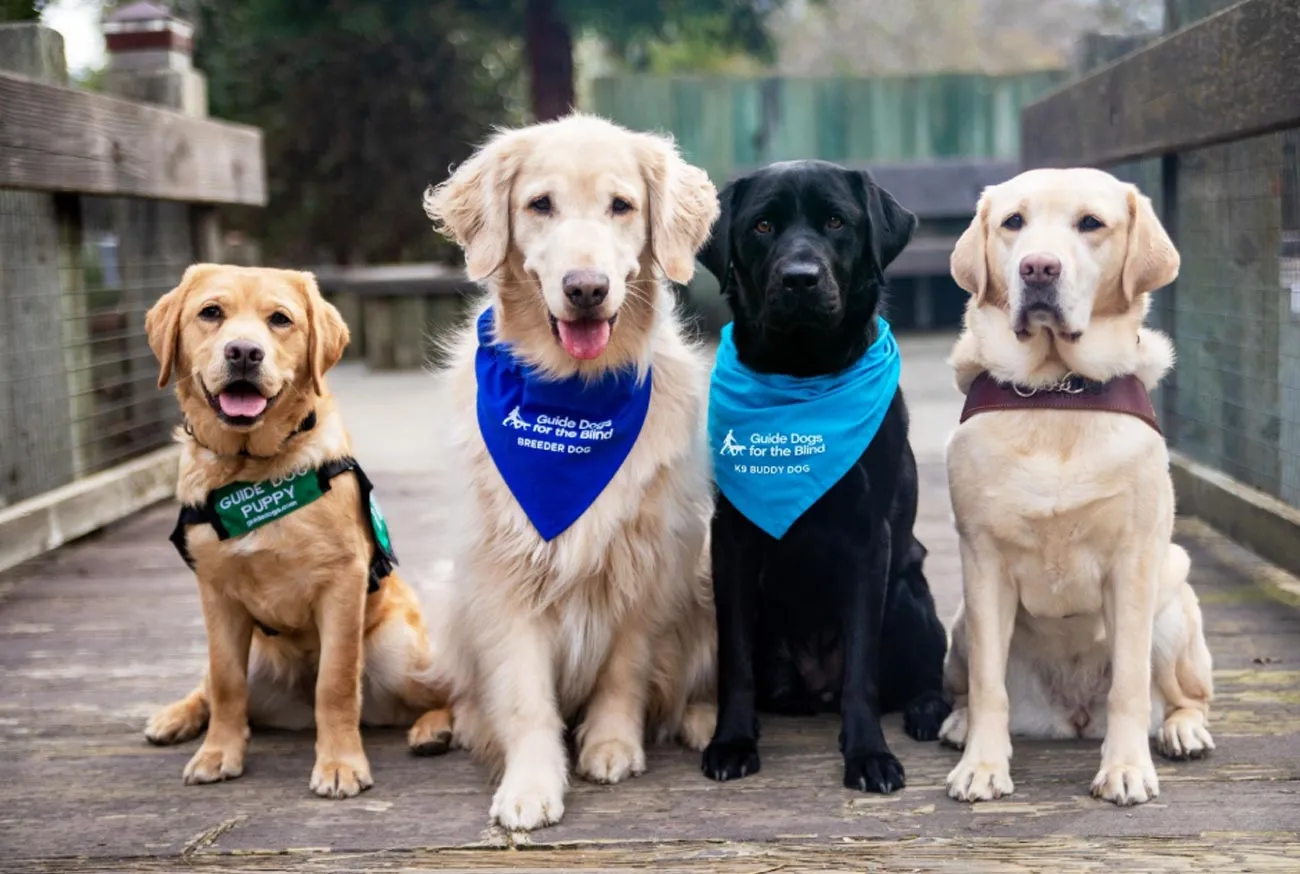How the guide dog came to be
The idea of using dogs to assist people with visual impairments dates back to the 13th century, when medieval paintings already depicted dogs accompanying blind individuals. However, it was only after World War I that the use of guide dogs gained momentum. With thousands of soldiers returning from the battlefield blinded due to injuries, there was an urgent need to provide support and independence to these individuals.
It was in Germany, in 1916, that the first guide dog training school was founded. The German physician Dr. Gerhard Stalling recognized the potential of dogs when he observed how a patient’s dog naturally guided him. Thus, the idea of training dogs specifically for this purpose was born. Initially, the school trained German Shepherds, a breed known for its intelligence and loyalty.
The evolution of guide dog training
Guide dog training has undergone several transformations over the decades. Today, it is highly specialized and requires months of dedication. But how does the training process work?
- Puppy selection: Not all dogs have the profile to become guides. The most commonly used breeds include Labrador Retrievers, Golden Retrievers, and German Shepherds, due to their intelligence, stable temperament, and adaptability.
- Initial socialization: During the first few months, the puppies are raised by volunteer families, where they learn basic commands, socialization, and good manners.
- Advanced training: After the socialization phase, the dogs undergo rigorous training that lasts between 6 and 8 months. They learn to avoid obstacles, recognize dangers, and help their future handlers move around safely.
- Matching with the handler: This is an exciting moment! The dog and the visually impaired person spend a few weeks together in supervised training, learning to work as an inseparable team.

Facts about guide dogs that will move you
- They “disobey” to protect: A guide dog is trained to ignore commands that could put their handler at risk. This is known as intelligent disobedience.
- They’re not just for the blind: Although they are best known for helping blind individuals, guide dogs can also be trained to assist people with other disabilities, such as reduced mobility and autism.
- They love to play but know the right time: Off duty, a guide dog is like any other dog – playful, loving, and full of energy. But when they put on the guide harness, they enter “work mode” and become extremely focused.
The impact of guide dogs on people’s lives
A striking example is the story of João Pedro, a 25-year-old man who lost his vision in his teens. After years of difficulties, he was paired with Max, a loving and dedicated Labrador. “Max changed my life. Today, I can go wherever I want without fear. He gave me back my freedom,” João says emotionally.
Challenges faced by guide dogs and their handlers
Despite the importance of guide dogs, there are still many challenges to overcome. One of the main issues is the lack of awareness among the general public. Many handlers face situations where they are denied access to commercial establishments, even though it is guaranteed by law that guide dogs can enter any public or private place of collective use.
Another challenge is the high cost of training. Training a guide dog can cost between R$50,000 and R$100,000, depending on the institution. Fortunately, several NGOs and specialized schools offer these dogs free of charge to visually impaired individuals.
Tips for encountering a guide dog on the street
If you come across a guide dog and its handler, it’s important to follow some basic rules to avoid disrupting the dog’s work:
- Don’t distract the dog: Avoid petting or calling it. It is working and needs to be 100% focused on its task.
- Ask before helping: If you notice that the handler might need assistance, ask before taking any initiative.
- Keep your pet dog away: This avoids distractions and potential conflicts.
How to support guide dog work
Did you know you can help promote this cause in various ways? Here are some suggestions:
- Become a volunteer: Many institutions look for families to socialize future guide dog puppies.
- Donate to specialized NGOs: Your donations help fund the training of these incredible dogs.
- Spread the word: Share this article and help raise awareness about the importance of guide dogs.
Guide dogs, silent heroes transforming lives
The history of guide dogs is living proof that dogs are indeed man’s best friend. They not only provide safety and mobility but also bring love, joy, and hope to those who need it most.
If you were touched by this story, share this article with your friends and help spread the word about the incredible work of guide dogs. Who knows, you might inspire someone to become a volunteer or support this important cause!

















Add comment